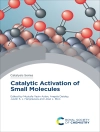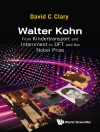Cucurbiturils (CBs) are a young family of molecular containers, able to form stable complexes with various guests, including drug molecules, amino acids and peptides, saccharides, dyes, hydrocarbons, perfluorinated hydrocarbons, and proteins. Since the discovery of the first CB, the field has seen tremendous growth with respect to the synthesis of new homologues and derivatives, the discovery of record binding affinities of guest molecules in their hydrophobic cavity, and associated applications ranging from sensing to drug delivery.
Cucurbiturils and Related Macrocycles provides a complete overview of CB chemistry, covering the fundamental aspects including its history, synthesis, host–guest chemistry and the thermodynamic basis thereof. The book will tackle specialist topics such as redox chemistry of CB complexes and CBs in the gas phase, and will address the recent trends of the application of CBs in other fields including biology and materials. Edited by a pioneer of cucurbituril chemistry, and with contributions from global experts, this title will appeal to students and researchers working in supramolecular chemistry, materials chemistry, nanotechnology, organic chemistry, biochemistry and chemical biology.
Table of Content
Introduction: History and Development; Synthesis of the Cucurbituril Family; Host–Guest Chemistry of the Cucurbituril Family; Cucurbituril Properties and the Thermodynamic Basis of Host–Guest Binding; Cucurbiturils as Reaction Vessels; Cucurbituril-based Sensors and Assays; Cucurbituril Complexes of Redox Active Guests; Coordination Chemistry of Cucurbiturils; Gas Phase Cucurbituril Chemistry; Drug Delivery Vehicles Based on Glycoluril Oligomers; Machines, Switches and Delivery Devices Based on Cucurbit[6]uril and Bambus[6]uril; Cucurbit[n]uril-based (n¼7 and 8) (Supra)molecular Switches; Functionalisation and Self-assembly of Nanoparticles through Cucurbit[n]uril-based Binding Motifs; Cucurbit[8]uril-based Polymeric Materials; Cucurbit[6]uril-based Polymer Nanocapsules and Thin Films; Cucurbiturils on Surfaces; Molecular Recognition of Proteins by Cucurbiturils; Supramolecular Latching System—Ultrastable and Controllable Synthetic Binding Pairs and Their Applications; Cucurbit[n]uril-type Receptors: Influence of Building Block Exchange, Deletion, and Augmentation; Hemicucurbiturils
About the author
Kimoon Kim studied chemistry at Seoul National University (BS, 1976), Korea Advanced Institute of Science and Technology (MS, 1978), and Stanford University (Ph D, 1986). After two-years of postdoctoral work at Northwestern University, he joined POSTECH where he is now a Distinguished University Professor. Recently, he was appointed as director of Center for Self-assembly and Complexity, Institute for Basic Science. He is a pioneer of cucurbituril chemistry publishing 130 papers on this topic since the mid-1990s. His current research focuses on developing novel functional materials and systems based on supramolecular chemistry.












